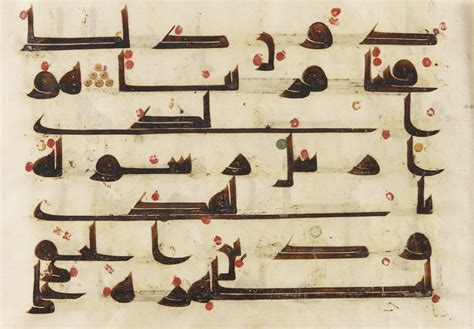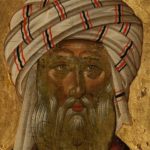
It is known that ‘Uthmān ibn ‘Affān burned the Qur’ān because of the differences in its text, and had it rewritten after having selected scribes for the purpose, headed by Zayd ibn Ḥārith. But he did not use the services of the Companion ‘Abdullah ibn Mas‘ūd who had kept a copy of the Qur’ān from the time of Muhammad. ‘Uthmān’s Qur’ān thus differed from the ancient (Syriac Christian) Qur’ān and the text has thus been subject to a distortion of its meanings ever since ‘Uthmān’s time.
BY NAFI SHABOU
THE SCHOLARS ACKNOWLEDGE that the Qur’ān has undergone distortion, but the generality of the people are unaware of this. The original Qur’ān was oral, and the Qur’ān confirms that Muḥammad could neither read nor write. This means that the Prophet would recite the Qur’ān and those listening would write it down. At that time the letters were not distinguished by diacritical dots and vowels were not indicated – these were added during a period after the death of Muḥammad and even after the Rightly-Guided Caliphs. The addition of diacritical dots and vowels constitutes the first distortion of the Qur’ān. If the Qur’ān had been perfectly memorized the Companions would not have fallen into any disagreement about it. The Qur’ān took on its current form after it was dotted, vocalised and arranged into chapters.
Many scholars were killed and declared infidel for acknowledging the distortion of the Qur’ān
During the time of the Companions the un-dotted Qur’ān was collated in a random manner, since there it was not organised by sūra (shūra in Syriac) and arranged the way it is now. This is confirmed by Ibn Kathīr:
‘Uthmān ibn ‘Affān employed eight scribes to write down the Qur’ān and they wrote the codex named ‘Uthmānī after him. As for the other Qur’āns, he collected those and burned them.
This prompted Ghayth al-Tamīmī to ask:
If the readings were not distorted, then why did ‘Uthmān burn the Qur’ān? The ‘Uthmānī Qur’ān does not currently exist, but the Muscat Qur’ān was discovered following the killing of ‘Alī ibn Abī Ṭālib in the first century AH in the mosque of ‘Umar ibn al-‘Āṣ and it was found to diverge from the Qur’ān that we now have. All Islamic works have emphasised this distortion of the Qur’ān, but Islamic commentaries continue to stress that the Qur’ān is not distorted.
He adds:
I am not bound by al-Bukhārī’s interpretations because the Text confirms that there has been distortion, while his interpretation opposes the Text. So the first distortion took place after the addition of the diacritical points, in which the letter ت (t) could turn into ب (b) and ث (th) into ن (n). It was thus possible for the word باب (‘door’) to be read as تاب (‘he repented’) or ثاب (‘he returned’).[1]
Sami al-Dheeb wrote in an article entitled The Qur’ān is a distorted book that:
Distortion in the Qur’ān is of three types: moral distortion, distortion in ordering, and verbal distortion. Moral distortion: whereby the expression is given a meaning far removed from and unconnected to its manifest, apparent sense, and contrary to the way it is commonly understood; Distortion in ordering: where a verse is transposed from its original position to another place; Verbal distortion: where there may be an lengthening, a shortening or an alteration of the word. Lengthening may encompass an entire sūra, a verse, a word or a single vowel, or it may be deleted or entirely changed.
Shaykh Muṣṭafā Rāshid summed up the situation the Qur’ān is in now in an article where he concludes:
‘The Holy Qur’ān, called ‘Uthmān’s Qur’ān, the one which we have in our hands now, is the text that ‘Uthmān ibn ‘Affān was able to collect or desired. He kept to this one as opposed to the others and went on to burn the rest of the Qur’āns, such as the Qur’ān of ‘Abdullah Ibn Mas‘ūd, the Qur’ān of Ibn ‘Abbās, the Qur’ān of ‘Ā’isha and others. This made the Companions and the general Muslims, led by lady ‘Ā’isha, to declare ‘Uthmān a disbeliever and demand his death. When he was assassinated they refused to have him buried in Muslim cemeteries. He was in fact interred among Jewish graves in the Ḥash Kawkab area in present-day Saudi Arabia. We cannot deny that there are many missing verses. We have to be honest with God and acknowledge and issue fatwās declaring that the Qur’ān is incomplete and that whoever says otherwise is either ignorant or is lying against God, which is the very essence of kufr, God preserve us.
One need only follow the interpretations of Muslim scholars to see their confusion as to how to understand a single verse of the Qur’ān, with their several interpretations that at times were self-contradictory and went against the interpretations of other, earlier commentators: [2]
It was narrated from Yusuf ibn Mahrān that he heard Ibn ‘Abbās say: ‘Umar ibn al-Khaṭṭāb commanded a crier to proclaim: “Come all to prayer!”. Then he ascended the pulpit, praised God and said: “O people, do not be afraid of the verse of stoning, for it is a verse that was revealed in the Book of Allah and His Qur’ān, but much of the Qur’ān vanished when Muhammad departed!”
Where did all this mass of verses go? How could so much of the Qur’ān vanish with the passing of the Prophet, while no one else memorized it, so that two-thirds of it is lost with only one third remaining – which is what we have now in the current Text.[3]

Suggested Reading
Yūsuf al-Siddīq, a Tunisian thinker specializing in anthropology, wrote:
After the death of the Prophet the Qur’ān was subject to tampering. One of the most conspicuous examples is the issue of the abrogating and abrogated verses which in my view is a usurpation of the Qur’ānic text!
Here al-Siddīq indicates “the need to be alive to another issue beyond the abrogating and abrogated verses, and to the fact that what we are holding to is simply what al-Bukhārī had set down two centuries after the death of the Prophet.”
[1] Ghayth al-Tamīmī, التميمي تحريف القرآن – القران المكي والقرآن المدني.
[2] Muslim scholars were highly exercised as to how to determine what words or phrases were, or were not, distorted or ambiguous due to the problems that the Qur’ānic text presented. The ranking of how clear the meaning of the word or phrase was seen to be ranged from: ẓāhir (‘manifest’, ‘apparent’) which may not be in harmony with the context in which it occurs; naṣṣ (‘explicit) which had a clear meaning in harmony with its context; mufassar (‘unequivocal’) one in harmony with the context, and muḥkam (‘definitive’) and unambiguous. Unclear words or phrases had their own gradation: khafī (‘obscure’); mujmal (‘ambivalent’) inherently unclear; and mutashābih (‘intricate’, ‘similar’) having a meaning that is entirely mysterious. Meanings having to be determined by the context were classed by the scholars as ‘explicit’ (‘ibārat al-naṣṣ), ‘alluded to’ (ishārat al-naṣṣ), ‘inferred’ (dalālat al-naṣṣ) or ‘required’ (iqtiḍā’ al-naṣṣ) for reasons of sense. (Ed.) For more on this see The Almuslih project Towards a Model Curriculum, [C] Courses: Revisiting the legal heritage, section C2.1.3 – The scriptural source: lexical matters, p.20.
[3] Sāmī Labīb, الأديان بشرية الهوى والهوية .
Main image: A 9th century Qur’ān showing sūra XLVIII (al-Fatḥ), 27-8: هُوَ الَّذِي أَرْسَلَ رَسُولَهُ بِالْهُدَىٰ وَدِينِ الْحَقِّ لِيُظْهِرَهُ عَلَى الدِّينِ كُلِّهِ ۚ وَكَفَىٰ بِاللَّهِ شَهِيدًا He it is Who sent His Messenger with the guidance and the true religion, that He may make it overcome the religions, all of them, though the polytheists may be averse.
